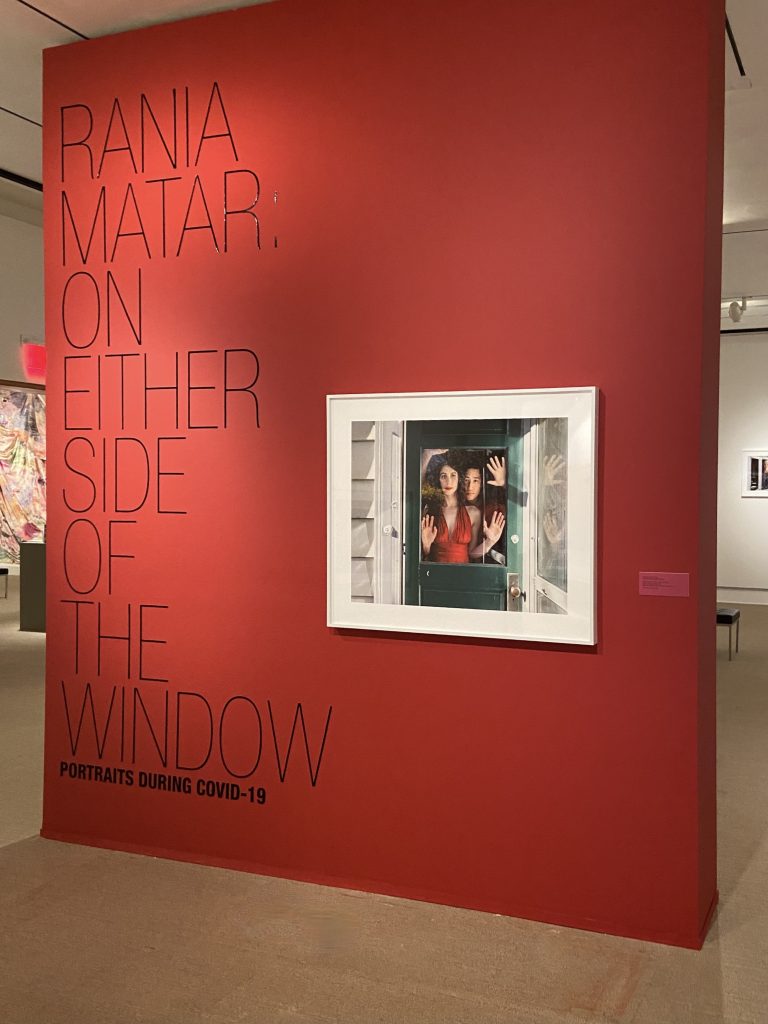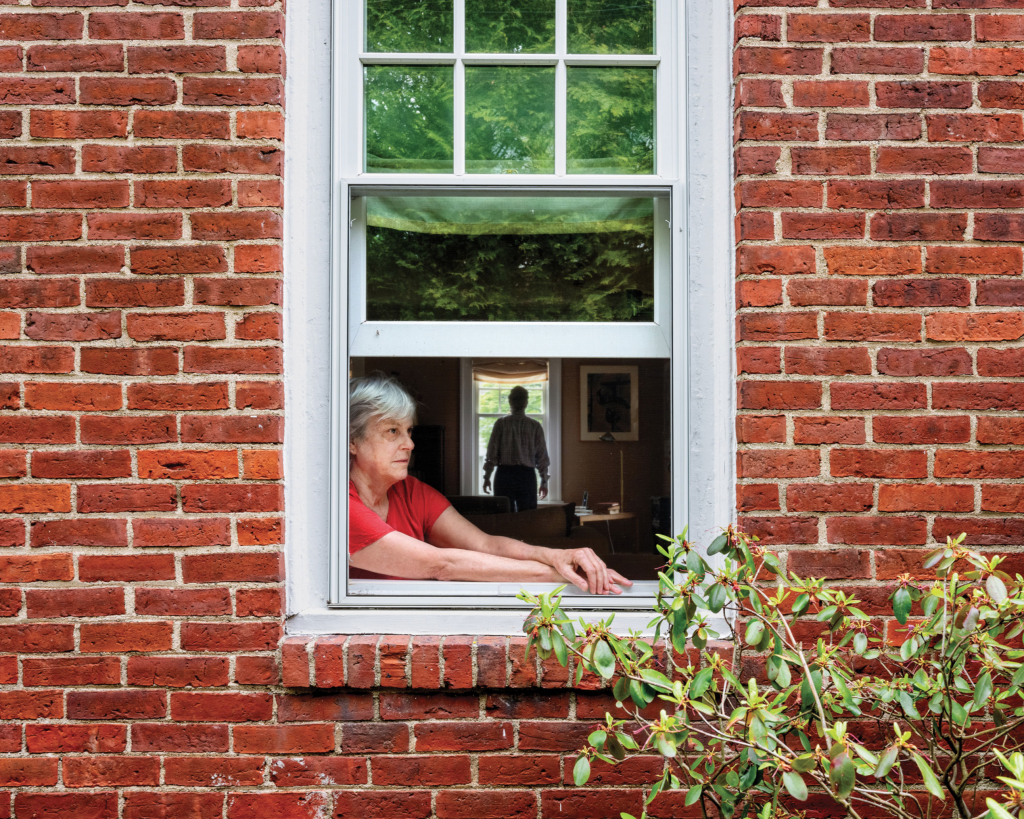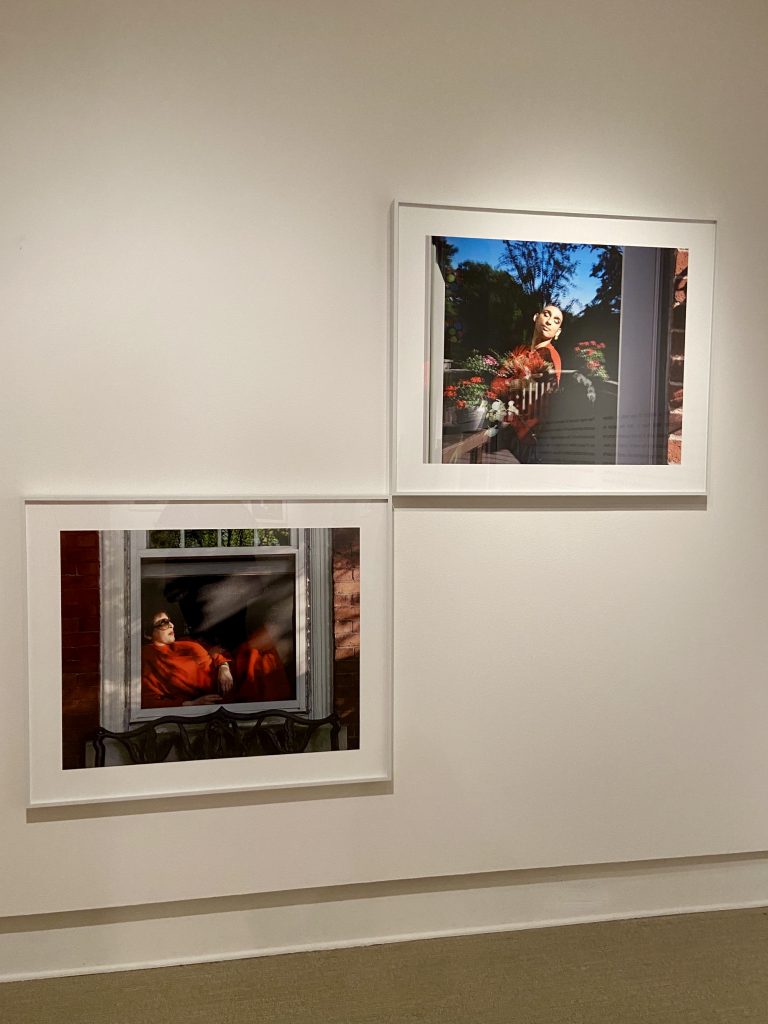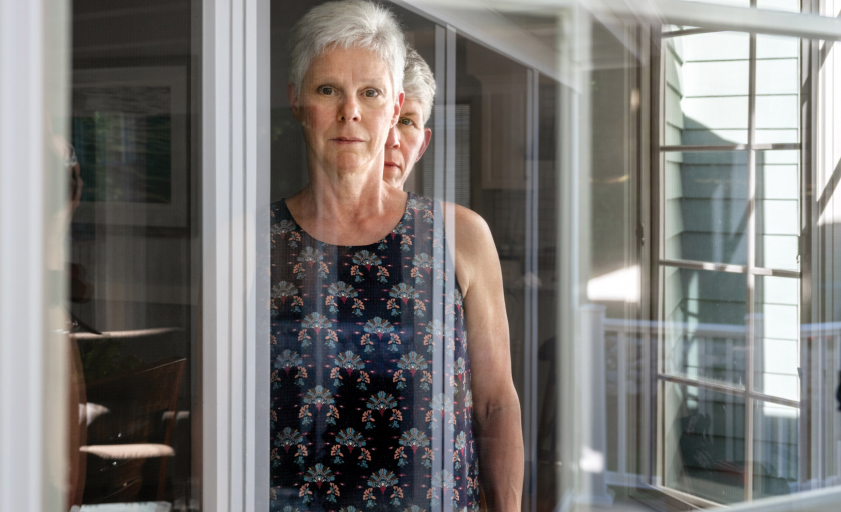By Selina Roman
In late February 2020, a colleague from the college where I teach asked me how I felt about the virus as it raged in China but had yet to get a foothold stateside. I shrugged my shoulders in response and indifferently said, “Hopefully it won’t come our way.” It seemed like something far off and abstract. “This is not our problem,” I thought.
Fast forward to now and a lot of us are fully vaccinated. We can go out, see family and friends, hug them, sit at a bar, or get on an airplane. It is hard to fathom that a year ago, we were in lockdown and unsure of what the future would bring in a pandemic. For many, our homes became our offices, movie theaters, coffee shops, and gyms. As we emerge from our collective Covid-19 fog, one photographer, Rania Matar, gives us the chance to look back and see lockdown through her lens.
A mélange of faces fills a gallery at the Cornell Fine Arts Museum at Rollins College, located in Winter Park, Florida. Framed by windows and doors, the people in Rania Matar: On Either Side of the Window, Portraits During Covid-19, defiantly take up space and confront viewers.

Like Diane Arbus and Alec Soth, Rania Matar’s portraits create a strong sense of intimacy not only between the artist and subject, but with the viewer as well. At the entrance to the show is an arresting image of a couple, Mia and Jun, Allston, Massachusetts. The couple greets visitors as soon as they enter the gallery. They stand behind a green door, Mia wearing bright red lipstick and red halter dress, and Jun wearing a red shirt. They are framed by the door of their forest green home, their hands pressed against the glass as if they are trapped. In a recent artist talk at the museum, Matar said the couple are dancers. This detail adds meaning to the expressions on the couples’ faces – a desire to move, to perform. On the flip side, however, a universal yearning to resume the lives we once knew.
Matar began the project last year shortly after lockdown. When residents of the northeast were emerging from winter and then just as the flowers were coming into bloom, they were ordered to stay home. She asked people on social media if they wanted their portraits made. As word got around, interest swelled and she crisscrossed the Boston area, landing in people’s yards and pointing her camera into their homes. Matar’s lockdown photo sessions came as a welcome respite from the barrage of new infections and deaths. Matar gave subjects the chance to perform, play dress up and connect with someone who was not part of their household. Taking in each image, it’s difficult not to reflect on one’s own lockdown experience.
Matar is known for her beautifully staged portraits. This body of work is no different. Every image in the show is loaded with beauty; however, the true excitement is the exhibition’s varying and undulating levels of intensity. Some images are serene and calming, while others are unsettling and tinged with anxiety.

In the image Wendy and Timmy, Newton, Massachusetts, 2020, an older woman in a red shirt slightly leans outside the window of her red-brick home. She looks off-camera. In the shadows of her room stands what appears to be a masculine figure, his silhouette framed by a window opposite hers. Is the man her husband? Her son? A handyman? The shadows conceal any details. The composition reads like a scene from a thriller. According to Gisela Carbonell, Curator, the man’s appearance was not planned. However, his appearance adds the right amount of mysterious narrative to the image. Lockdown came in so many shapes and sizes – families, couples, people on their own. In Wendy and Timmy, the idea of being locked inside and how our limits might be tested, for better or for worse, comes into view.
Matar, as in her other bodies of work, possesses a keen sense of combining setting and figure and creating new layers of meaning, with each informing the other. In the Her series, she photographs young women around the world in not only picturesque places, but in heartbreaking ones, such as the rubble from last year’s devastating blast at the port in Beirut, Lebanon. In the pandemic series, the settings aren’t as dramatic but are still nonetheless captivating and compelling.

In a striking pair of photographs, proximity and the color red unite the subjects who look like they could be neighbors in the same building. In the first image, Cyrus, Brookline Massachusetts, 2020, a figure with closed eyes leans back, a smile on painted lips, the sunlight bathing their face and a sliver of the red blouse. The reflections of the trees and red flowers outside this window seem to exuberantly explode from the subject, framing them sublimely. In the second image, Marina, Brookline Massachusetts, 2020, a woman also in red, reclines in an open window, shadows dancing on the screen. She dons sunglasses, a short haircut and red lips, a la Liza Minelli. Her look screams Diva in the best way. The corners of each of the two images touch, seemingly connecting the subjects. Their proximity creates a dialogue, a human connection – of which so many of us needed at this time last year.
The color red permeates the exhibition, and I cannot help but think of all of the symbolic meanings this color has – love, passion, life, blood – and gives the exhibition its pulse.
A year later, we navigate the world in masks and face shields and seeing a stranger’s face seems like a novelty. None of Matar’s subjects don a mask, and nearly each subject’s face is visible. In many of the images the glass or the screen becomes the barrier between photographer and subject. The duality of the windows and their reflections become one of the most compelling devices in the series. The reflections serve different purposes such as abstraction or a sense of place. In one photograph, Diana and Chris, Watertown Massachusetts, 2020, two women stand together. They look related, sisters perhaps, similar age, short haircuts, and silver hair. Reflections on the window frames create a rhythmic and infinite labyrinth of lines, intersections, and corners – a reminder of how our own human relationships and networks ground to a halt.

In Matar’s images life and time march on in the face of a pandemic and isolation. Nowhere is that more evident than in the two portraits of Susan. In the first photograph, Susan, Salem Massachusetts, 2020, a woman brushes her long brown hair alone as she looks off-camera. What looks like late afternoon light falls on the woman revealing a swollen belly peeking out from her dress. We immediately realize she isn’t alone after all. In the next photograph, Susan, Raffy and baby Violette, Salem, Massachusetts, 2020, the woman holds a small breastfeeding infant while a man brushes the mother’s hair. As before, beautiful light falls on the woman creating an almost sublimely religious tableau. The pandemic was, and might still be, at our doorsteps – it felt like time was at a standstill, yet it is photographs like these that offer hope of a better day.
Matar reminds us that there is life and it’s worth the wait. The photographs are life-affirming and so is the exhibition. Rania Matar: On Either Side of the Window, Portraits During Covid-19 is on view until May 9, 2021 and a virtual walkthrough of the entire exhibition can be found here.
The Cornell Fine Arts Museum, on the Winter Park campus of Rollins College, is the only teaching museum in the greater Orlando area. The collection ranges from antiquity through contemporary eras, including rare old master paintings and an in-depth collection of prints, drawings, and photographs. The museum displays temporary exhibitions on a rotating basis along with the permanent collection, and a satellite exhibition space for the Museum’s Alfond Collection of Contemporary Art is located at The Alfond Inn, which is within walking distance of the campus.
Tampa-based Selina Román received her Masters of Fine Arts degree from the University of South Florida in 2013. She has participated in residencies with the Visual Artists Network and Diaspora Vibe Cultural Arts Incubator. Her work is in the collection of the John and Mable Ringling Museum of Art in Sarasota; the Leepa-Rattner Museum of Art in Tarpon Springs; Hillsborough Community College, as well as numerous private collections. She teaches visual art and photography courses at the University of Tampa and Hillsborough Community College in Tampa.


Selina, nice work! I like the whole concept of this series of the artist’s work. I could see you and Rania collaborating – outside looking in – and inside looking out. Two sides of the same coin. Hmmmmm. I also like your photographs of the photographs – especially the first one of the entry wall, text, and image.
Thank you for your insightful comment. Selina is one of our favorite contributors!